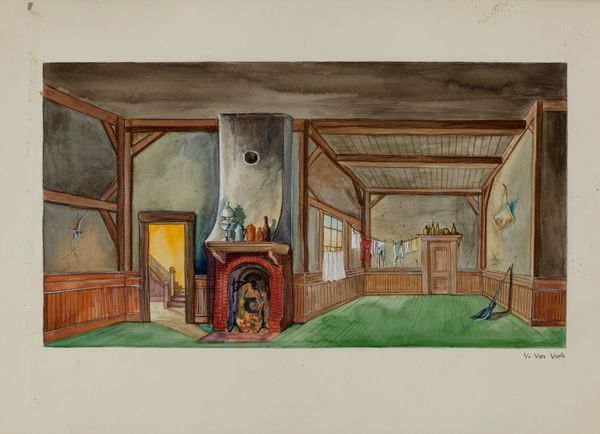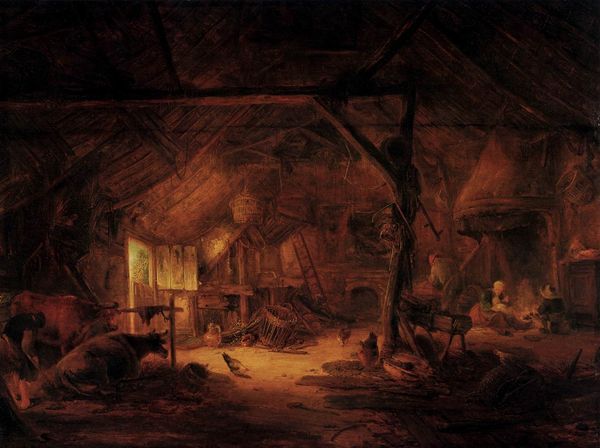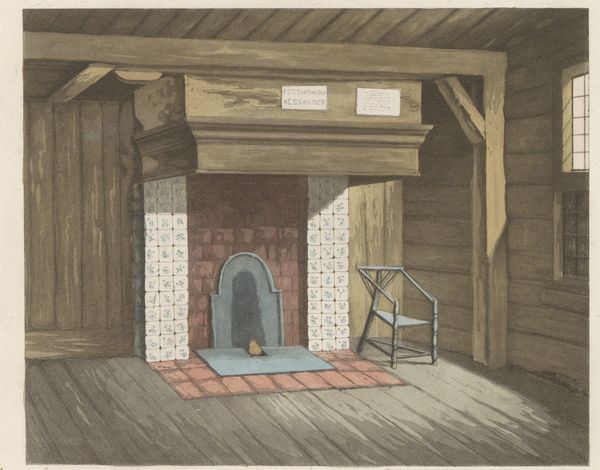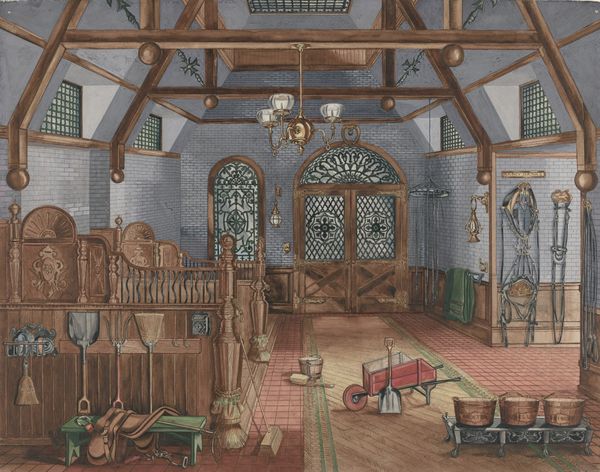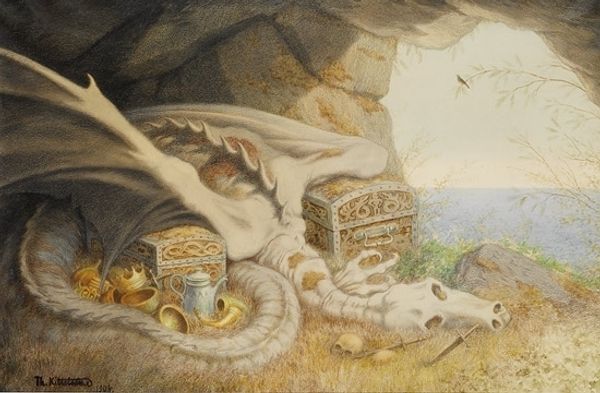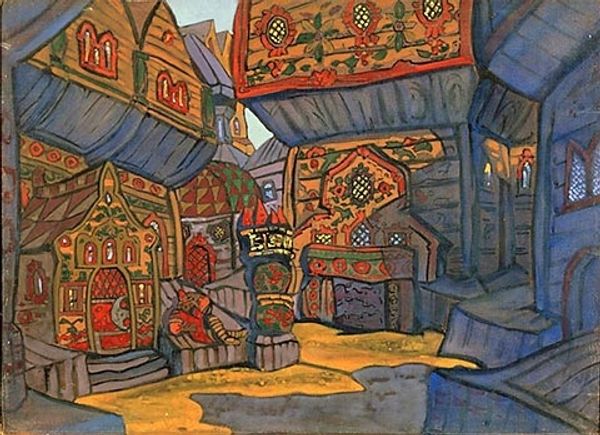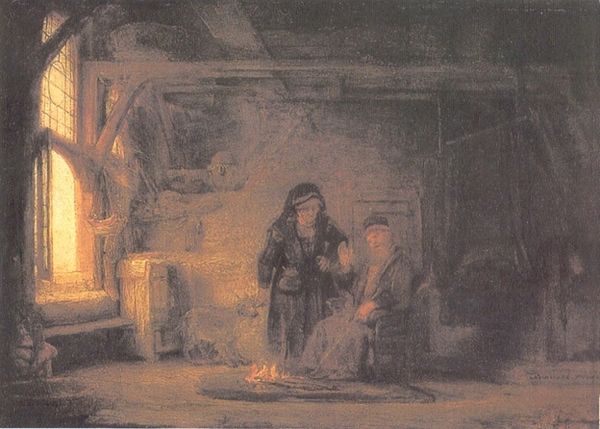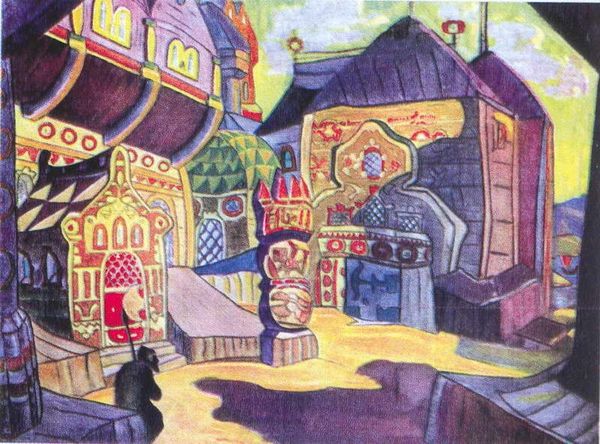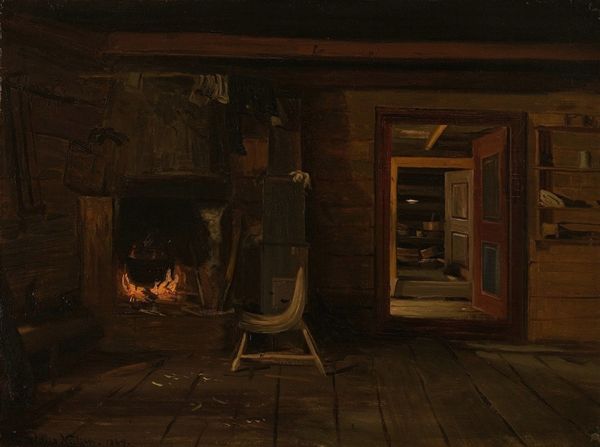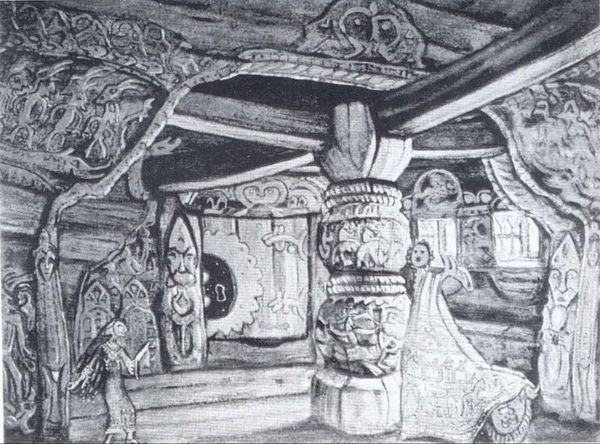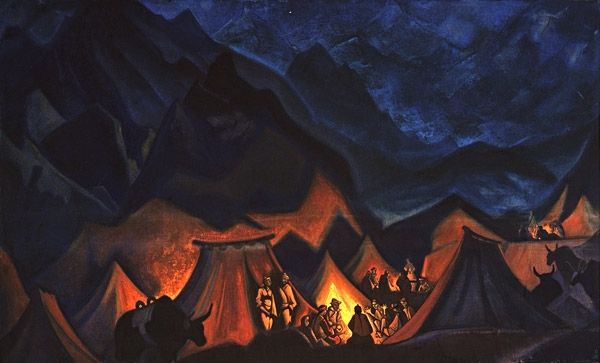
coloured-pencil, watercolor
#
coloured-pencil
#
landscape
#
watercolor
#
coloured pencil
#
symbolism
#
russian-avant-garde
#
watercolor
Copyright: Public domain
Editor: So this is "Tower chamber of Yaroslavna" by Nicholas Roerich, created in 1914 using watercolor and colored pencil. It’s interesting, almost like a stage set with that sharply receding perspective. What immediately strikes me is the emphasis on interior architecture and the wood graining. What catches your eye, Professor? Curator: Initially, it’s the treatment of space. Note how the artist manipulates perspective to flatten the composition. The orthogonals of the floorboards do converge, yes, but the window, and its framing decorative woodwork, are treated frontally, emphasizing the picture plane rather than creating a deep recession. Does this tension between flatness and depth resonate with you? Editor: Absolutely. It feels very deliberate. I was also wondering about the texture created by the colored pencil and watercolor. It's not trying to hide the materials at all, which I find interesting. Curator: Indeed. Observe how Roerich leverages the inherent qualities of his media. The grain of the colored pencil isn’t disguised; it's celebrated, creating texture and emphasizing the materiality of the wooden structure. This resonates with the Symbolist movement's interest in surface and the power of the visual elements themselves. Do you notice any other compositional devices employed to emphasize the architectural forms? Editor: I think the way the light is handled is significant. The even illumination almost makes it feel like a diagram, rather than a realistic space with shadows. And the view in the window provides contrast. Curator: Precisely. The even light flattens the form while accentuating the texture, almost removing all traces of volume. The choice to present the stylized, graphic cityscape through the window brings forward/creates another type of picture within a picture—one set back into an alternate spatial setting/scheme altogether. Are you also attuned to that lone figure there, just off to one side? It’s intriguing. Editor: I agree! It is striking that she is facing *away* from the picture's window and implied light source, which serves to isolate the character and imply longing or despair, a potential interpretation based on the symbolic architectural confinement on view in this Russian Avant-Garde-ish work. Curator: A nuanced and astute assessment; one that helps further bring to light/further shed light/illuminate this symbolic narrative and this interior scene’s intrinsic structure as well. Editor: Thanks, this discussion has helped me appreciate the work beyond my first impression, particularly how the form supports potential symbolism!
Comments
No comments
Be the first to comment and join the conversation on the ultimate creative platform.
